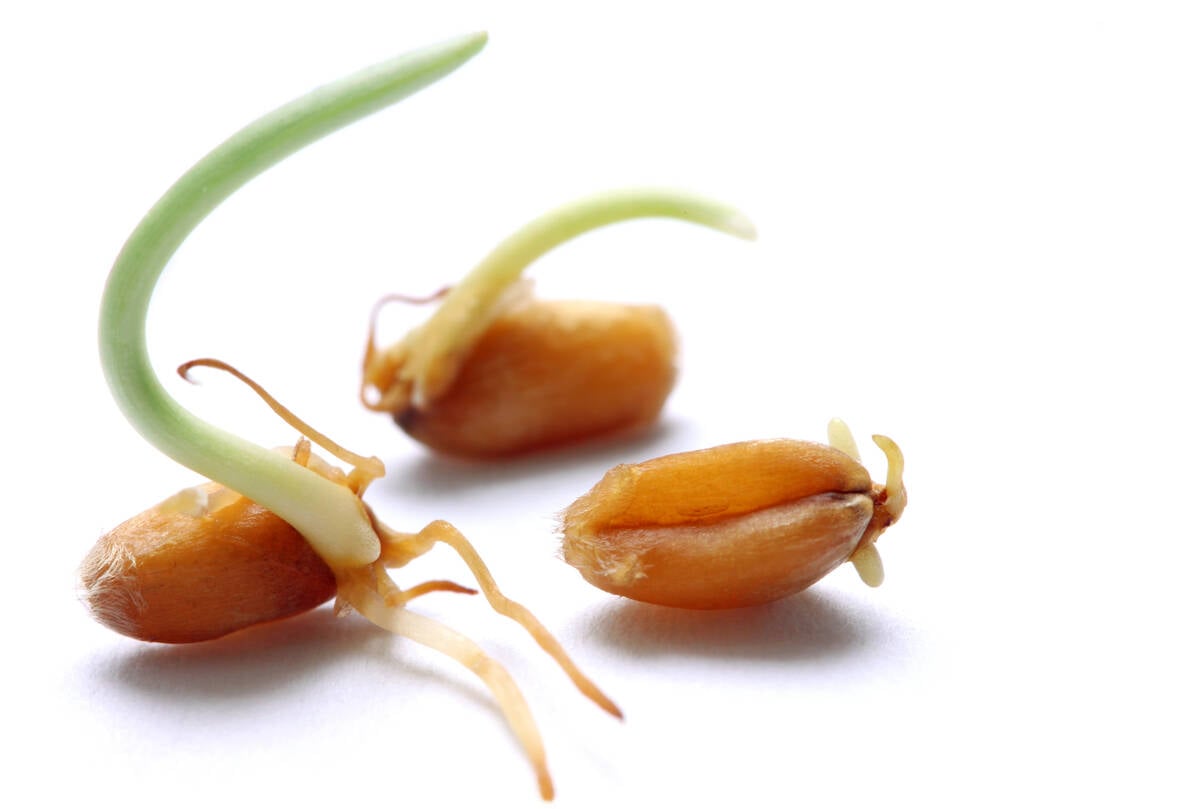What may be the boldest and perhaps the most controversial aspect for agriculture contained in the British Columbia Green Party’s new policy platform isn’t listed under the agriculture part of the platform at all.
The party’s climate change plan would progressively increase the carbon tax over four years starting in January 2018 by $10 per tonne per year.
The current rate in British Columbia is $30 per tonne of carbon dioxide equivalent emissions, although farm gas and diesel is exempt.
During an interview, Kim Charles-worth, the party’s spokesperson for agriculture and food systems, said the policy is about trying to shift the sector into a different way of operating.
Read Also

Manitoba farmers fight sprouted wheat after rain
Rain in mid-September has led to wheat sprouting problems in some Manitoba farm fields.
“When you look at the Cuban story of what happened in Cuba after the Russians pulled out supporting them and they, in the span of five years they went from heavily, completely subsidized carbon-intensive farming to basically supporting themselves with very, very little in the way of carbon inputs,” she said.
She added in a later email that the agriculture platform includes $40 million to help farmers adapt to the changing climate, which would include helping them to reduce their reliance on fossil fuels.
There were no exemptions for farm fuel when B.C.’s carbon tax was introduced at $10 in 2008. An exemption was granted in 2014, following outcries from farmers saying that the higher costs rendered them less efficient and unable to compete in key markets.
The BC. Green Party agriculture platform stresses what it says is an overreliance on food imports from other provinces and other nations. It states that 70 percent of vegetables consumed in B.C. are imported from the United States.
The party says agriculture has not been receiving the support it needs from government to build these markets at home and to help agriculture adapt to climate change.
“When you’re looking at rural economic development, agriculture is a no-brainer if you’re living in an area that supports agriculture,” said Charlesworth
She said small businesses, which include small farms, have long been a key economic driver in B.C. and yet the current Liberal government has ignored them.
“The B.C. government in 2015, 2016 spent the least amount on agriculture of any province in Canada as a percentage of its agriculture GDP (gross domestic product), and, in fact, the federal government spent more on agriculture in B.C. than the B.C. government did.”
According to an Agriculture Canada report called an Overview of the Canadian Agriculture and Agri-Food System, total agriculture and agri-food spending by the B.C. government as a percentage of agriculture GDP was 14.3 percent.
“The problem is we are not focusing on small farms and not focusing on food farms. What support we have seen is in the large agrifood industrial model-type farming, and it has tended to focus more on hay and vineyards,” she said.
“While that is good economic development at the very large level, it really does nothing for food security and it’s not creating the kinds of jobs that small business creates.”
Charlesworth emphasized there’s nothing wrong with vineyards and hay, but the party wants to add to what is currently on offer.
“The focus here, is that what we want to focus on here first is creating sustainable economic development opportunities in rural B.C., and we can do that with agriculture,” she said. “And we’re not displacing anything by doing that. We are adding value.”
A key part of strengthening small farms, she said, is restoring the network of agricultural extension services. The pool of experts that once provided agronomic and business advice to farmers from government offices located in various regions across the province has been eroded to the point that it barely exists any more, she said.
“Bring that back. And that is part of what our platform is funding: a return of that kind of service to small farmers.”
Requests to the B.C. Agriculture Council for interviews were not returned.
- It would invest $30 million to help agriculture provide more of the food consumed within the province.
- It would introduce legislation to protect land and increase ALR land in use for agricultural purposes.
- It would provide $40 million for research and establish regional agricultural bureaus.
- It would collaborate with indigenous people, the not-for-profit sector and other interests to improve access to land for farming.
- It would introduce measures to address labour shortages.














